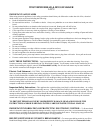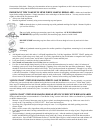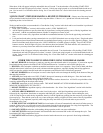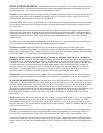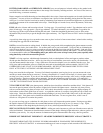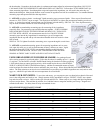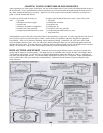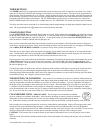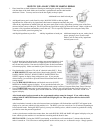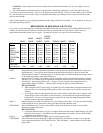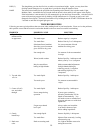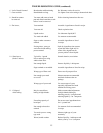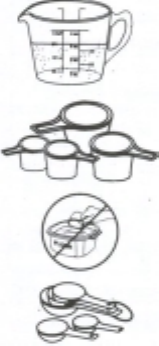
2
front section of this book. Please pay close attention on how to measure ingredients, as this is the most important step in
bread machine baking and the difference between success and failure.
IMPORTANT TIPS TO KEEP IN MIND WHEN MAKING BREAD ARE: - Make sure knead bar is
in pan before adding ingredients. Simply match hole in bar with shape of shaft and slide on. You may need to twist bar
slightly to slide all the way down on shaft.
• Always use fresh ingredients.
• Measure ingredients accurately using correct measuring cups and spoons.
USE see-through glass or plastic measuring cups with graduated markings for liquids. Measure liquids at
eye level for accuracy.
Use set of solid, nesting type-measuring cups for dry ingredients. ALWAYS SPOON DRY
INGREDIENTS, especially bread flour, into measuring cups, then level with a knife.
DO NOT SCOOP measuring cups into flour as this will cause dough to be too dry and result in short
loaves.
USE set of graduated measuring spoons for smaller quantities of ingredients, measuring level, not rounded
or heaping.
• Add ingredients to pan in this order: 1) all liquid ingredients first, 2) all dry ingredients, EXCEPT YEAST, putting salt
in one corner of pan to keep away from yeast, 3) level dry ingredients in pan, divide butter or margarine into 4 pieces
and place a piece in each corner, and 4) make a slight well in center and add yeast.
• Lock pan securely in machine, turning counterclockwise.
• Make bread and crust color selections first, then turn machine on.
• Feel free to check dough during knead cycle for any minor adjustment that may be needed. After 8-10 minutes of
kneading, open cover to look at and touch dough. (Opening cover at this time does not affect performance). Dough
should be in a ball on knead bar and feel a bit sticky. This is perfect and needs no adjustment. If dough is very sticky
and clinging in one corner of pan, it is too wet and needs flour. Add 1 tablespoon flour at a time until dough forms into
a soft ball on knead bar. If dough is too dry and the machine seems to be struggling, add lukewarm water 1 teaspoon at
a time, until dough becomes soft and elastic and a bit sticky to the touch. When making any adjustment, always allow
flour or water to be blended into dough thoroughly, about 1 minute, before making any further adjustment.
‘QUICK START’ STEPS FOR MAKING FIRST LOAF OF BREAD - You are probably very anxious
to start using your new bread maker without having the time to read this book from cover to cover. Follow these ‘Quick
Start’ steps for making that first loaf of bread, whether using the mix included with your bread maker or one of the recipes
in this book. And while you are enjoying that first slice of freshly baked bread, sit back and read the book to ensure
successful baking results each and every time. It contains very important information on the proper use of your bread
maker.
‘QUICK START’ STEPS FOR MAKING BREAD MIX INCLUDED WITH BREAD MAKER
Wash pan and knead bar as recommended in “Clean Before Using” section in this book. Make sure knead bar is positioned
on shaft in bottom of pan.
1. Measure 1-cup (8 ounces) lukewarm water in glass or plastic see-through measuring cup. Make sure water level is
exactly at the 1 cup marking, at “EYE LEVEL”. Pour water into bread pan.
2. Open bag of dry ingredients and pour into pan on top of water. Level ingredients with knife, pushing some into
corners of pan.
3. Make a well in center of dry ingredients; add yeast from packet included with mix.
4. Lock pan into bread maker, turning counterclockwise (see LOCK directional arrow on edge of pan). Plug bread maker
into outlet.
5. The bread maker is already preprogrammed for making the box mix. After the machine is plugged in, the words
BASIC and MEDIUM will appear in the display along with 3:40 (3 hours, 40 minutes) which is the time needed to
make the mix. Press START/STOP button to turn on. Red ON light will glow, colon between hours and minutes will
flash and time will count down in minutes so you always know how much time remains until the bread is done.



